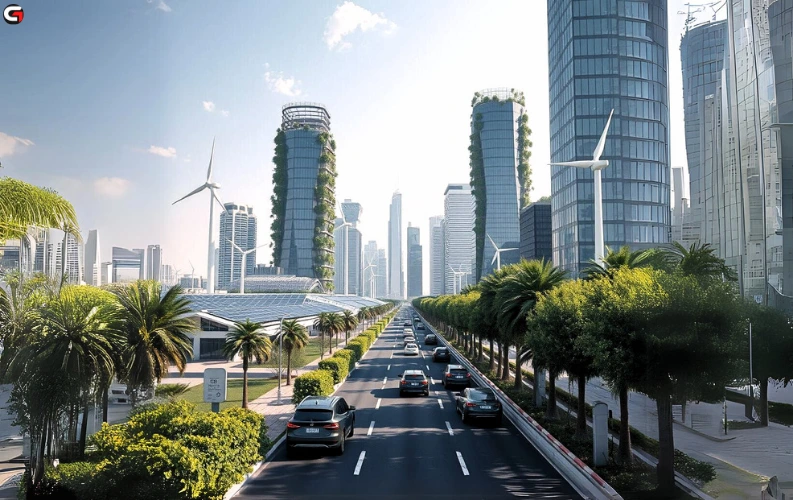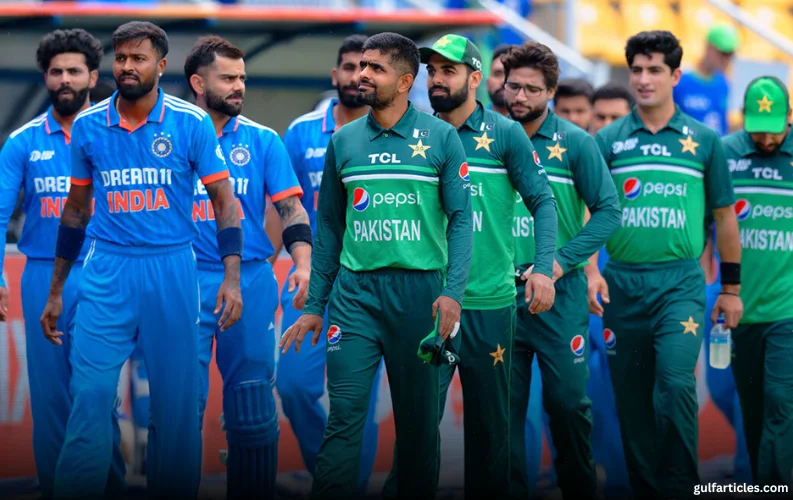In recent years, Gulf countries have increasingly positioned themselves at the forefront of the global sustainability movement. Known traditionally for their vast oil reserves, these nations are now embracing innovative strategies to address environmental challenges and promote sustainable development. This blog explores how the Gulf countries are making strides in sustainability, highlighting key initiatives, challenges, and future prospects.
1. The Changing Landscape of the Gulf Countries
1.1 Historical Context
Historically, the Gulf countries, including Saudi Arabia, the United Arab Emirates (UAE), Qatar, Oman, Bahrain, and Kuwait, have relied heavily on their oil and gas industries for economic growth. However, the global shift towards sustainability and the recognition of the finite nature of fossil fuels have prompted these nations to reassess their strategies.
1.2 Economic Diversification
To reduce their dependence on oil, Gulf countries are investing in various sectors, including renewable energy, technology, and tourism. This diversification is crucial for creating a sustainable economy and ensuring long-term prosperity.
2. Renewable Energy Initiatives
2.1 Solar Power Projects
The Gulf region is blessed with abundant sunshine, making it an ideal location for solar energy projects. Countries like the UAE and Saudi Arabia have launched ambitious solar initiatives to harness this potential.
-
UAE’s Masdar City: Masdar City in Abu Dhabi is a prime example of a sustainable urban development project. It aims to be one of the world’s most sustainable cities, powered largely by solar energy.
-
Saudi Arabia’s Noor Energy 1: This massive solar power project in Dubai is expected to be one of the largest in the world, significantly boosting the region's renewable energy capacity.
2.2 Wind Energy Ventures
Although less common than solar, wind energy is also gaining traction. Qatar and Oman are exploring wind power projects to diversify their energy mix and reduce carbon emissions.
2.3 Energy Efficiency Programs
Gulf countries are implementing energy efficiency programs to optimise energy use in residential, commercial, and industrial sectors. These programs include the introduction of energy-efficient appliances, smart grids, and green building standards.
3. Sustainable Urban Development
3.1 Green Building Standards
Green building standards are becoming increasingly prevalent in Gulf countries. These standards focus on reducing the environmental impact of buildings through energy efficiency, water conservation, and sustainable materials.
-
Dubai’s Green Building Regulations: Dubai has introduced regulations that mandate green building practices, encouraging the construction of eco-friendly structures.
-
Qatar’s Global Sustainability Assessment System (GSAS): GSAS is a sustainability assessment system designed to promote environmentally responsible construction practices in Qatar.
3.2 Eco-Friendly Transportation
To combat urban pollution, Gulf countries are investing in sustainable transportation solutions. These include electric vehicles, improved public transportation networks, and pedestrian-friendly infrastructure.
-
Dubai’s Metro System: Dubai’s Metro system is an example of a successful public transportation initiative that reduces reliance on private vehicles and lowers emissions.
-
Saudi Arabia’s Electric Vehicle Strategy: Saudi Arabia is developing a strategy to promote electric vehicles and reduce the environmental impact of its transportation sector.
4. Conservation and Environmental Protection
4.1 Marine Conservation Efforts
The Gulf region is home to diverse marine ecosystems that are under threat from industrial activities and climate change. Gulf countries are undertaking significant efforts to protect these vital ecosystems.
-
Marine Protected Areas: Several Gulf countries have established marine protected areas to safeguard coral reefs, mangroves, and other critical habitats.
-
Oman’s Coral Reef Restoration Projects: Oman is actively involved in coral reef restoration projects to mitigate the effects of climate change and preserve marine biodiversity.
4.2 Desert and Wildlife Conservation
Desert ecosystems and wildlife are integral to the Gulf region’s natural heritage. Conservation initiatives are focused on preserving endangered species and restoring degraded habitats.
-
Saudi Arabia’s National Parks: Saudi Arabia has created national parks to protect its desert landscapes and wildlife, including the Arabian Oryx and sand gazelles.
-
UAE’s Al Marmoom Desert Conservation Reserve: This reserve aims to conserve the UAE’s desert ecosystem and promote sustainable land management practices.
5. Policy and Regulatory Frameworks
5.1 National Sustainability Strategies
Gulf countries are developing national sustainability strategies that outline their long-term goals and commitments to environmental protection.
-
Saudi Vision 2030: Saudi Arabia’s Vision 2030 includes a strong focus on sustainability, with initiatives aimed at reducing carbon emissions, increasing renewable energy capacity, and promoting environmental conservation.
-
UAE’s Green Growth Strategy: The UAE’s Green Growth Strategy aims to transition to a green economy by investing in clean technologies and promoting sustainable practices across various sectors.
5.2 International Collaborations
Gulf countries are also engaging in international collaborations to address global environmental challenges. These collaborations include partnerships with international organisations, participation in climate agreements, and sharing best practices with other nations.
6. Challenges and Opportunities
6.1 Water Scarcity
Water scarcity is a significant challenge in the Gulf region due to its arid climate. Addressing this issue involves investing in desalination technologies, improving water conservation practices, and promoting efficient water use.
6.2 Climate Change
Climate change poses a threat to the Gulf region’s environment and economy. Gulf countries are working to mitigate the impacts of climate change through adaptation strategies, including infrastructure improvements and disaster preparedness.
6.3 Technological Innovation
Technological innovation is crucial for advancing sustainability efforts. Gulf countries are investing in research and development to drive innovation in clean technologies, energy storage, and environmental monitoring.
7. Future Prospects
7.1 Continued Investment in Renewables
The Gulf region is likely to continue its focus on renewable energy, with ongoing investments in solar, wind, and other clean technologies. This will help reduce reliance on fossil fuels and support global sustainability goals.
7.2 Sustainable Development Goals
Gulf countries are aligning their policies with the United Nations Sustainable Development Goals (SDGs), striving to achieve targets related to clean energy, sustainable cities, and climate action.
7.3 Innovation and Leadership
As Gulf countries advance their sustainability initiatives, they have the opportunity to become global leaders in sustainable development. By leveraging their resources, expertise, and innovative approaches, they can set a positive example for other nations.
Conclusion
Gulf countries are making remarkable progress in leading the sustainability movement. Through investments in renewable energy, sustainable urban development, conservation efforts, and robust policy frameworks, these nations are demonstrating their commitment to creating a more sustainable future. While challenges remain, the Gulf region’s proactive approach and dedication to innovation offer hope for a greener, more resilient world.
You may also like:-





















